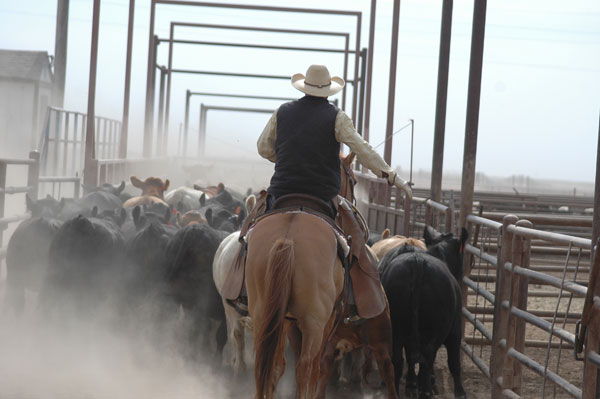Beef cattle mobility has been a hot topic in recent years. Let’s look at what causes mobility issues and how to prevent concerns.
May 1, 2019

By Michelle Calvo-Lorenzo
While the winter-like conditions still have a hold on some parts of the country, warmer weather is just around the corner. With the rising temperatures come concerns of fed beef cattle overcoming stress-related conditions during the hot summer, including cattle mobility.
Now is the time for feedlot operators and cattle producers to brush up on intervention strategies that can help optimize mobility and keep issues to a minimum. But first, let’s take a look at the current state of mobility monitoring among U.S. beef cattle.
Since 2014, the North American Meat Institute (NAMI) Mobility Scoring System has been used as an industry-wide tool to monitor beef cattle mobility. The scoring system provides a tool for trained observers to view, evaluate, and score the movement of cattle at feedlots or the packing facility.
The scoring system is based on an index of one to four. A score of one indicates normal conditions, while a score of four indicates major challenges to movement. Details of the scoring parameters are outlined in Figure 1.
Numerous factors can affect mobility
One factor highly associated with poor cattle mobility is warm weather, as the proportion of cattle receiving an abnormal mobility score is greatest during the summer months when heat stress occurs.
When cattle experience stressors at the feedlot, during transport, or at the packing plant, and that stressful event is compounded with heat stress, cattle will often become fatigued, breathe heavily, and walk abnormally. Thus, it’s important to minimize stress on cattle throughout the marketing process, particularly during the summer.
Another factor that tends to be associated with abnormal beef cattle mobility is long transport distances. In many cases, the longer the transport time, the higher the risk for abnormal mobility.
Finally, another common cause of poor cattle mobility is long wait periods on stationary trucks. Stationary trucks often offer poor air circulation and high temperatures, especially when loaded with large numbers of animals during times of high temperature and humidity levels.
Ensuring that trucks are in working condition before beginning the loading process is crucial to prevent significant welfare risks to cattle. Avoid unnecessary stops and in the event of a truck malfunction, unload cattle (whenever practical) to help prevent heat stress and possible mobility issues.
Prior to arrival at the plant, determine the current weather conditions at the plant and communicate with plant personnel on the anticipated wait time prior to unloading. If the plant is not ready for unloading at the scheduled time, develop an alternative plan that may include keeping the truck moving until the plant is ready for your cattle.
About 90% of cattle have favorable to normal mobility, however, this isn’t happenstance. Feedlot operators and cattle producers need to be aware of intervention strategies that can help decrease the risk for abnormal mobility.
4 practical tips to avoid mobility concerns
Always move cattle with a lead rider – When moving cattle, position a lead rider in the front of the group to keep cattle calm and walking at a steady pace. When stressed and panicked, cattle are likely to run, leading to exhaustion, fatigue, and possible injuries. Conversely, a lead rider can help keep animals moving at a steady, controlled pace. Avoid handling or moving of cattle during times of the day when the risk of heat stress is high.
Stage pens to position heavier cattle closer to loadout facilities – Staging heavier cattle in pens closer to the loadout facility will minimize walking distances and stress during the loading process. A good time to position heavy cattle near loadout facilities is at re-implanting.
Identify cattle that are unfit for transport – Being aware of the animal’s health status is important during the loading and transportation process. Animals that are injured, sick or incapable of enduring transport should be identified before loading and excluded from transport.
Minimize the time in transport and lairage – Reducing the duration of time that cattle spend in transport and waiting in lairage can help reduce stressors impactful to mobility as cattle progress through the marketing channel.
By encouraging the use of these practical tips and striving to minimize or avoid the causes of mobility concerns in the first place, cattle caretakers can ensure the welfare of their beef cattle and sustain continued success for their operations and industry.
Figure 1 |
Mobility Score |
1 |
2 |
3 |
4 |
Calvo-Lorenzo serves as a technical consultant for Elanco Animal Health, specializing in livestock welfare.
You May Also Like



